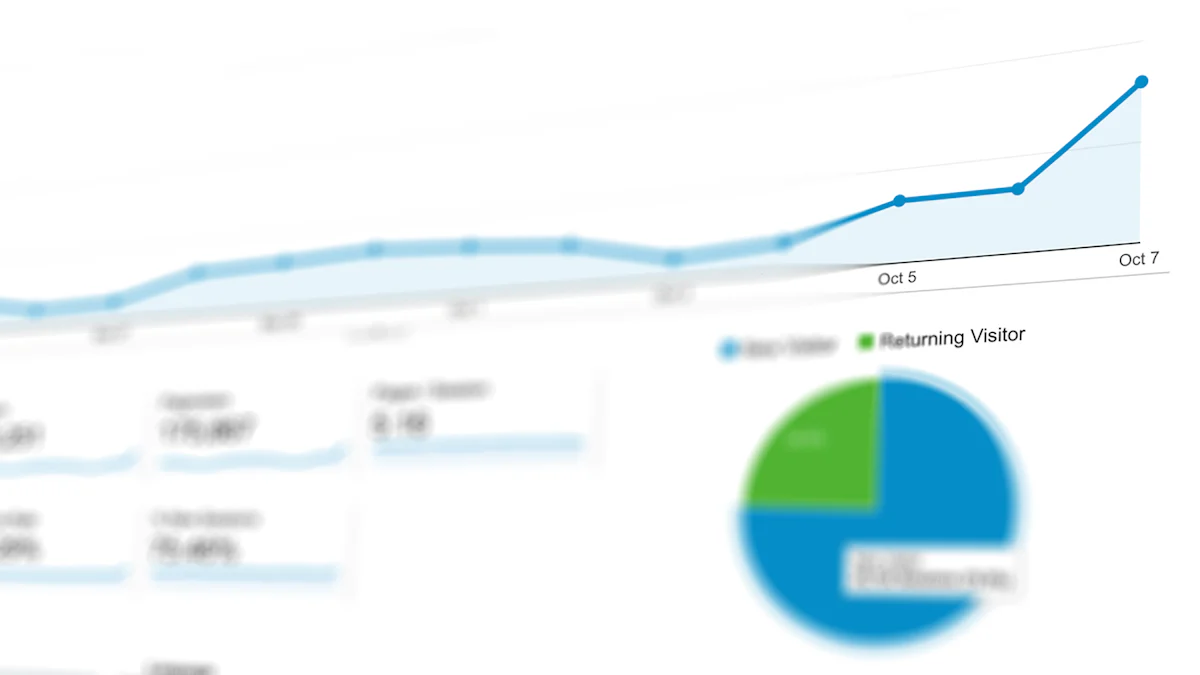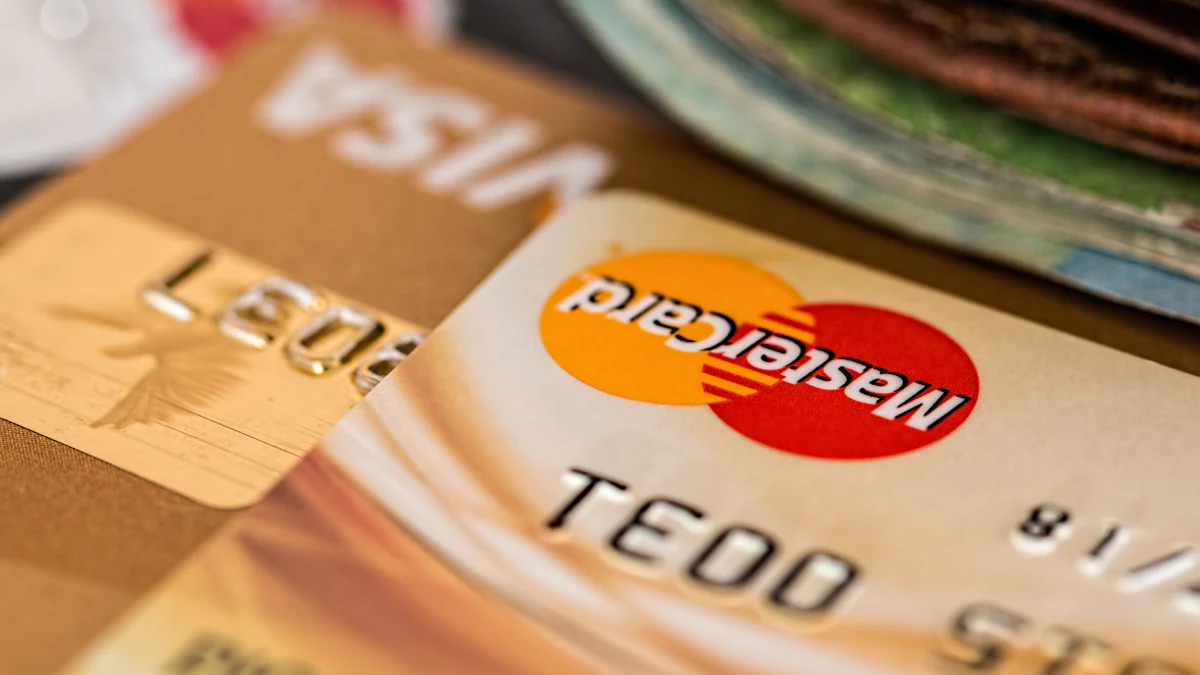What credit cardholders should know about interest rates in 2025

Credit cardholders know that interest rates are expected to decline slightly in 2025, but they shouldn’t expect dramatic relief. The Federal Reserve’s anticipated rate cuts may lower average APRs to around 19.80%, down from the current 21% range. However, balances remain a concern, with Americans holding $1.17 trillion in outstanding credit card debt. Even as delinquencies rise more slowly, 8.8% of balances were over 30 days late in late 2024. Paying down your balances now can help you avoid mounting interest costs, as even small rate reductions won’t significantly impact your APR.
Key Takeaways
Expect only a slight decline in average credit card APRs to around 19.8% in 2025, so don't rely solely on rate cuts to manage your debt.
Pay down your credit card balances now to avoid high interest costs, as even small rate reductions won't significantly impact your overall expenses.
Consider using balance transfer offers with 0% introductory APRs to reduce interest costs and focus on paying down your principal faster.
Stay informed about changes in credit card rewards programs and adjust your spending habits to maximize benefits tailored to your needs.
Build an emergency fund and monitor your credit score to enhance your financial resilience and qualify for better credit card offers.
Credit Card Predictions for 2025
Economic factors influencing interest rates
Federal Reserve rate cuts and their delayed impact on APRs
The Federal Reserve’s decisions will play a key role in shaping credit card interest rates in 2025. At the 2024 Yahoo Finance Invest conference, Federal Reserve Bank of Minneapolis president Neel Kashkari emphasized the importance of waiting for economic data before making rate decisions. If the Fed cuts its target rate range, credit card APRs may decline slightly. However, these reductions won’t happen immediately. Most credit cards have variable rates tied to the Prime Rate, which adjusts based on Fed actions. It can take up to three months for these changes to reflect in your APR. Even with potential cuts, average credit card rates are expected to remain high, hovering around 19.8% by the end of 2025.
The role of inflation and economic growth in shaping credit card rates
Inflation and economic growth will also influence credit card rates. Historically, high inflation has kept rates elevated. While inflation is expected to moderate, the Fed’s key rate will likely remain at its highest level since 2008. This will keep financing costs, including credit card APRs, relatively high. Economic growth trends, such as increased consumer spending and improved confidence, may further impact rates. However, significant changes in APRs are unlikely unless the Fed makes substantial moves to lower its rates.
Expected trends in credit card APRs
Projected decline in average interest rates by the end of 2025
Credit card predictions suggest that average APRs will drop slightly in 2025. According to McBride’s forecast, the average rate will decrease to 19.8%, down from the current 24.4%. This decline reflects anticipated Federal Reserve rate cuts. However, the reduction of about half a percentage point won’t provide significant relief for most cardholders.
Comparison of 2025 rates to previous years
When compared to historical averages, 2025 rates will still be high. Over the past decade, average APRs hovered around 16% during periods of low Fed rates. In contrast, the projected 19.8% for 2025 remains significantly higher. This highlights the lasting impact of recent economic conditions on credit card interest rates.
Year | Projected APR | Historical Average APR |
|---|---|---|
2025 | 19.8% | 16% |
2023 | 24.4% | N/A |
Credit card balances and fees
Forecasted increase in credit card balances
Credit card balances are expected to grow in 2025. The 2025 Consumer Credit Forecast from TransUnion projects a 4.4% year-over-year increase, bringing balances to $1.1 trillion. This growth reflects gradual price increases, higher consumer spending, and reduced personal savings. While balances will rise more slowly than in previous years, they remain a concern for many households.
High fees for revolving balances despite rate cuts
Even with lower APRs, fees for revolving balances will stay high. Carrying a balance month-to-month can lead to mounting costs, especially if you only make minimum payments. Experts recommend paying down your debt as soon as possible to avoid these fees. Waiting for rate cuts won’t make a significant difference in your overall costs.
How Changing Interest Rates Will Impact Credit Cardholders

Effects on monthly payments and balances
How lower rates could reduce interest costs for some cardholders
Lower interest rates in 2025 may slightly reduce your monthly credit card payments. If the Federal Reserve cuts its target rate range by 75 basis points, your card’s APR could drop by a similar amount. This reduction might help you save on interest costs, especially if you carry a balance. However, don’t expect dramatic changes. Credit card rates often take up to three months to adjust after a Fed rate cut. Even then, the average APR will likely remain above 19%, which means the financial relief may feel minimal for most cardholders.
The ongoing burden of high fees for those carrying balances
Despite lower rates, high fees will continue to burden those who carry balances. Revolving balances come with compounding interest, which can quickly add up if you only make minimum payments. For example, a $5,000 balance at a 19.8% APR could still cost you hundreds in interest over the course of a year. Paying down your balance as quickly as possible remains the best way to avoid these fees. Waiting for rates to drop further won’t significantly change your financial situation.
Implications for overall debt management
Strategies to minimize the cost of long-term debt
You can take proactive steps to reduce the cost of long-term debt. Consider opening a credit card with a 0% introductory APR for new purchases or balance transfers. This can help you avoid interest for a limited time. Analyze your current cards for unnecessary fees and eliminate them where possible. Building an emergency fund can also reduce your reliance on credit cards for unexpected expenses. Additionally, using repayment strategies like the debt snowball or avalanche method can help you prioritize and pay off debts more efficiently. Debt consolidation or a Debt Management Plan (DMP) may also provide relief by combining multiple debts into one with a lower interest rate.
The importance of paying down balances before rates stabilize
Paying down your balances now is crucial. Even if rates decline slightly, the average APR will remain high compared to historical levels. Waiting for rates to stabilize could leave you with mounting interest costs. The New York Federal Reserve reports that Americans already hold $1.17 trillion in credit card debt, with delinquencies affecting 8.8% of balances. By reducing your debt now, you can avoid falling into this cycle and improve your financial stability before rates settle.
Changes in Credit Card Benefits and Rewards Programs

Adjustments to cashback and rewards structures
Potential changes in cashback percentages and redemption options
In 2025, you may notice adjustments in cashback percentages and how you redeem rewards. Credit card issuers are likely to refine their programs to stay competitive. Some cards may reduce cashback rates on general purchases while increasing rewards for specific categories like groceries or travel. Redemption options could also expand, offering more flexibility. For example, you might see more opportunities to redeem points for exclusive experiences or transfer them to travel partners for higher value. This shift reflects the growing focus on personalized rewards that align with your spending habits.
Emerging premium cards with new benefits
New premium cards are entering the market with exciting benefits. Alaska Airlines has introduced a premium credit card offering companion certificates and lounge passes. JetBlue plans to launch a premium card granting access to domestic lounges. Additionally, issuers like Bilt are innovating by allowing you to earn points on home purchases and even mortgage payments. These new premium cards aim to attract customers by providing unique perks that cater to specific needs, such as travel rewards credit cards for frequent flyers or homeowners looking to maximize their spending.
Credit card issuers' response to economic conditions
Possible reductions in perks or increased fees
Economic conditions in 2025 may lead issuers to adjust their offerings. You could see higher annual fees for premium cards as issuers enhance benefits to justify the cost. Some perks might be reduced, especially for entry-level cards, as issuers focus on profitability. However, premium cardholders may benefit from improved travel rewards, such as complimentary lounge access or priority boarding. These changes highlight the ongoing credit card competition among issuers to retain and attract customers.
Introduction of innovative rewards to attract customers
Issuers are introducing innovative rewards programs to stand out. Programs like American Express Membership Rewards and Chase Ultimate Rewards are expected to add more options for redeeming card rewards, including exclusive experiences. Bilt Rewards and Capital One Entertainment already lead in offering points and miles for unique events. These programs cater to your desire for memorable experiences, making them a compelling choice if you value redeeming points for more than just cash or travel.
Proactive Steps for Credit Cardholders in 2025
Managing credit card balances effectively
Paying off high-interest debt before rates stabilize
Paying off high-interest debt should be your top priority in 2025. Even if the Federal Reserve lowers rates, average APRs will remain above 19%. Waiting for rates to stabilize could leave you with mounting interest costs. Start by using repayment strategies like the snowball method, which focuses on paying off smaller debts first, or the avalanche method, which targets high-interest debts. These approaches can help you reduce your balances faster.
You can also explore low or no-interest options, such as credit cards with a 0% introductory APR for purchases or balance transfers. These offers allow you to avoid interest for a limited time, giving you a chance to focus on paying down the principal. Additionally, building an emergency fund can reduce your reliance on credit cards for unexpected expenses, helping you stay on track.
Using balance transfer offers to reduce interest costs
Balance transfer offers can be a game-changer for reducing interest costs. Many cards in 2025 feature a 0% introductory APR for balance transfers. By transferring high-interest debt to one of these cards, you can avoid interest charges for a set period. This strategy enables you to focus on paying down the principal, leading to faster debt repayment. For large balances, this could save you hundreds of dollars. However, always check for balance transfer fees, as they can impact your savings.
Comparing and choosing the right credit card
Evaluating APRs, fees, and rewards programs for 2025
When comparing credit cards, evaluate APRs, fees, and rewards programs carefully. Look for cards with low interest rates or attractive introductory APR offers. Consider other fees, such as annual fees, cash advance fees, and late payment penalties. High annual fees can be worth it if the card offers exceptional rewards or perks. Also, check for restrictions on earning and redeeming rewards, as these can affect the card’s overall value.
Understanding terms and conditions to avoid surprises
Understanding the terms and conditions of a credit card is crucial. Read the fine print to identify hidden fees or limitations on rewards. For example, some cards may cap the amount of cashback you can earn or impose blackout dates for travel rewards. Knowing these details upfront can help you avoid unpleasant surprises and choose a card that aligns with your financial goals.
Building financial resilience
Creating a budget to manage credit card spending
Creating a budget is essential for managing credit card spending. Start by tracking your expenses and setting spending limits. Digital tools can help you monitor your purchases and set up alerts to prevent overspending. For better control, total up your purchases weekly or monthly to ensure you stay within your budget. Setting a monthly spending limit based on your income and expenses can also keep your finances in check.
Monitoring credit scores to qualify for better offers
Monitoring your credit score is vital for qualifying for better credit card offers. A healthy credit score improves your chances of securing cards with lower APRs, higher credit limits, and better rewards. Regularly check your credit report to understand your creditworthiness and manage your credit utilization effectively. Maintaining a strong credit history can open the door to more favorable offers in 2025.
Credit card interest rates in 2025 may decline slightly, but balances and fees will likely stay high. You should not rely on rate cuts alone to manage your debt. Instead, focus on proactive strategies:
Pay down balances now to avoid mounting interest costs.
Stay informed about changes in rewards programs and adjust your spending habits.
Use tools like 0% APR offers or debt repayment methods to minimize financial stress.
Building an emergency fund and monitoring your credit score can also help you stay financially resilient. These steps will prepare you for the evolving credit landscape.
See Also
Understanding the Effects of Fed Rate Cuts on Savings
Should You Invest in Real Estate in 2025?
Finding the Right Balance Between Risk and Return

